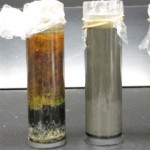Updated April 20
A local parenting magazine just published a story by Robert Lachman on vaccines and autism perpetuating the false link between them. An online version is available, which is slightly different from the paper version. In the past, Ive ignored these kinds of articles because I just get so frustrated. But I recently decided that if someone like me doesn’t speak up and start contributing accurate information to the public, who will?
As such, I am drafting a letter to the magazine and am seeking your editorial input. I want to write a clear, strong letter but also dont want to scare readers away with too much “science-y” stuff. The target audience is parents with, most likely, no science background. Please read what I have written and let me know what you think.
The article also refers to a study presented at a 2010 Pediatrics Academic Society Conference in Vancouver which he claims confirms the link. Thanks to a reader, we may have found the studies to which he refers, which do not support his claim (see comments section).
Anyway, here is a draft of my letter:
“Dear Hudson Valley Parent Magazine:
In your most recent issue, a story titled “Vaccines and Autism: The Controversy Continues” was published. The only thing that is continuing the controversy is continued publication of articles such as these that present misleading information. Scientifically, the issue is settled: there is no link between autism and vaccines.
The story downplays the fraud committed by Andrew Wakefield. It is clear that Wakefield falsified his data. He has been stripped of his positions, degrees, and license to practice. Brian Deer, the reporter who uncovered the fraud, is now under attack. Shooting the messenger is just a last ditch attempt to save a movement based on falsehoods. All you have to do is look at the data and the findings, the large body of independent scientific research that clearly shows there is no link.
It is also clear that he had financial interests in seeing the MMR vaccine discredited, since he had developed his own vaccine. Interestingly, the anti-vaccine movement is quick to blame vaccine manufacturers as being influenced by profit motive or finding conspiracy in discrediting Wakefield’s findings, but Wakefiled’s clear financial conflict of interest is conveniently overlooked.
However, I realize that evidence of fraud and financial conflict of interest isn’t going to resonate with many in the anti-vacccine movement. The fact is, scientifically, it doesn’t really matter that his data was fraudulent. The Wakefiled study involved only 12 children, a sample size much too small to draw strong conclusions. Further, the study was poorly designed: to connect vaccines to autism, the study depended entirely on parental or physician recall of events in the past, a method known to be highly ineffective. In fact, it’s not much different from anecdotal data. Since Wakefield’s study, there have been many subsequent studies involving larger number of participants that have been rigorously designed and appropriately controlled and NONE have supported a link between vaccines and autism. The reason the scientific method works, and the reason humanity has gained great knowledge and understanding of the natural world around us is that the scientific method is self-correcting. Any finding must be verified independently, by other researchers, using a combination of different approaches. Only after a significant body of work is developed can a strong conclusion be made. Wakefield’s study triggered such a body of research, which has consistently shown that that there is no link between vaccines and autism. That is to say, Wakefield’s conclusions have not withstood the test of the scientific method. The fact that his data was fraudulent only confirms what scientist already knew: vaccines do not cause autism.
The article describes the personal experience of specific parents who believe their children are autistic as a result of vaccination. Anecdotal data can be used to support any position. Where are the interviews with parents of vaccinated children who don’t have autism? The anecdotal data doesn’t sand up when you consider the many anecdotes I have about parents who vaccinated and don’t have autistic kids. Whose anecdotes should we believe? The only information we should consider is from well designed and controlled studies.
The article also describes a study presented at the Pediatrics Academic Society conference in Vancouver in 2010, which he claims confirms the link between autism and vaccines. I, and others, have carefully searched the abstracts of the work presented at the conference and found no such study. Two abstracts addressed gastrointestinal symptoms associated with autism, the closest I could find to the topic. However, the issue of vaccination is not addressed in these studies. It would be appreciated if the author provided a specific citation so that readers can look at the study themselves. It is concerning to me that either Mr. Lachman completely misunderstood the research or is being intentionally misleading. In fact, in the article, he writes that Wakefield’s study connecting vaccines to autism has been vindicated, and in support states that the PAS study links gastrointestinal disease in autistic children. The issue in question is not regarding a connection between gastrointestinal symptoms in autism but a connection between vaccines and autism. There appears to be a vast leap, making conclusions that simply can not be made from the data. Implying that these studies support a link to vaccination is entirely misleading.
Finally, Wakefield’s study, the actions of the anti-vaccine movement and the perpetuation of misleading information is troubling on a very deep level. Children are dying from preventable diseases, directly attributable to decreased vaccination rates. It is a crime that this should happen. The other victims in this whole scandal are kids with autism. Rather than focusing on finding the actual cause of autism, the distraction of the vaccine link has driven the focus away from valuable research that needs to be done. With so much data to support the absence of a link between vaccines and autism, and so much reason to find the real cause (or causes) of autism, I seriously wonder whether the driving force behind this movement is now the desire to be right, rather than the desire to protect our kids.
Sincerely,
David Esteban
Assistant Professor of Virology and Microbiology
Vassar College
Im adding some links:
Here is Wakefield’s paper. You might find it hard to read due to the big red RETRACTED written over each page.
One of the articles in BMJ regarding the fraud.
An Editorial from BMJ




